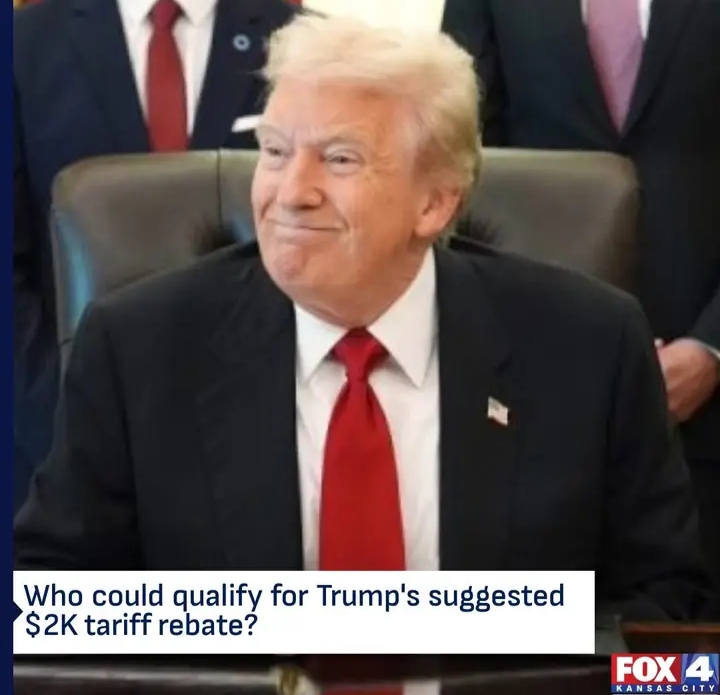CELEBRITY
Over the weekend, President Trump suggested that most Americans may receive “at least” $2,000 from the tariff revenue collected this year, which may have left you wondering if you fall into the category of “most Americans. Check the comments for more details”

Over the weekend, President Trump suggested that most Americans may receive “at least” $2,000 from the tariff revenue collected this year, which may have left you wondering if you fall into the category of “most Americans.”
### Trump Floats a “$2,000 Dividend” for Most Americans
Over the weekend, Donald Trump suggested that most Americans may receive *“at least $2,000”* from the tariff revenue collected this year — a move designed to highlight his trade policy and play to populist themes. ([People.com][1])
In a post on his social-media platform, he wrote:
> “A dividend of at least $2000 a person (not including high-income people!) will be paid to everyone.” ([mint][2])
> He added, “People that are against Tariffs are FOOLS! We are now the richest, most respected country in the world…” ([euronews][3])
—
### So — will *you* get the payment?
There are several uncertainties and caveats:
**Who is eligible?**
* Trump stipulated “most Americans” and specifically excluded “high-income people.” But he has not defined the income cutoff (how high is “high income”?). ([Al Jazeera][4])
* He hasn’t clearly said whether children are included, or whether the payment is per adult or per household. ([Al Jazeera][4])
* There is no fully detailed program yet — the form of the payment (direct check, tax reduction, rebate) is unclear. ([euronews][3])
**How much revenue is available?**
* The federal government collected roughly US$195 billion in customs duties through the first 3 quarters of 2025. ([euronews][3])
* But analysts estimate that distributing a $2,000 payment to, say, 150 million qualifying adults would cost about $300 billion — already bigger than the current tariff revenue haul. ([Al Jazeera][4])
* Some of the tariff revenue may already be earmarked for other uses (e.g., reducing the national debt) or may be subject to legal risk (for example, if a court rules some tariffs invalid). ([Al Jazeera][4])
**What still needs to happen?**
* Congress would likely need to approve any broad dividend payment plan; the executive branch alone may not be able to implement it. ([Anadolu Ajansı][5])
* Legal challenges: The Supreme Court of the United States has been reviewing whether some of Trump’s tariffs are within his executive authority — a negative ruling could reduce future revenue. ([euronews][3])
* Details are sparse on timing, payment method, eligibility criteria, and whether children or households (versus individuals) would be included.
—
### What should you consider?
If you’re wondering whether *you* count as one of the “most Americans” eligible for a $2,000 payment, here are some practical points:
* If you make a “high income” (though we don’t yet know exactly what threshold), this proposal suggests you might be excluded.
* If you are in the low or middle-income category, you are more likely to be in the target group — but the absence of clear definition means no guarantee.
* Because the payout is contingent on legislative and legal steps, there is risk that the plan might be scaled down, delayed, or restructured into something other than a one-time check (for example, tax cuts or credits rather than cash).
* Also, even if a payment goes through, it will not arrive immediately — though Trump’s announcement signals the intention, implementation takes time.
—
### Bottom Line
Trump’s proposal for a $2,000 tariff-based dividend is eye-catching and politically potent, but at this stage it remains largely aspirational. Most Americans *could* fall into the eligible category (assuming the income cutoff is generous), but the many unanswered questions about mechanics, eligibility, and funding mean it’s **too early to assume you will definitely receive a payment**. If you are in the low- or middle-income range, you may be well positioned — but patience and close attention will be needed as details emerge.












